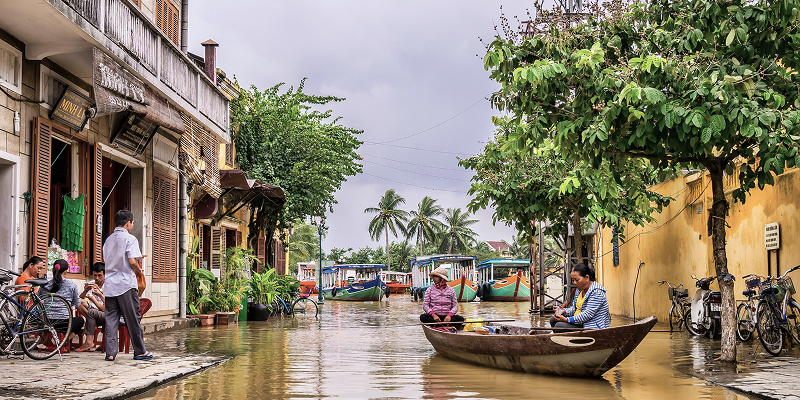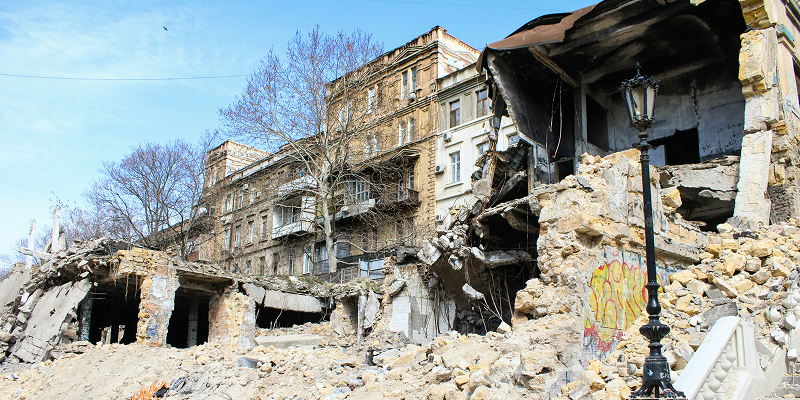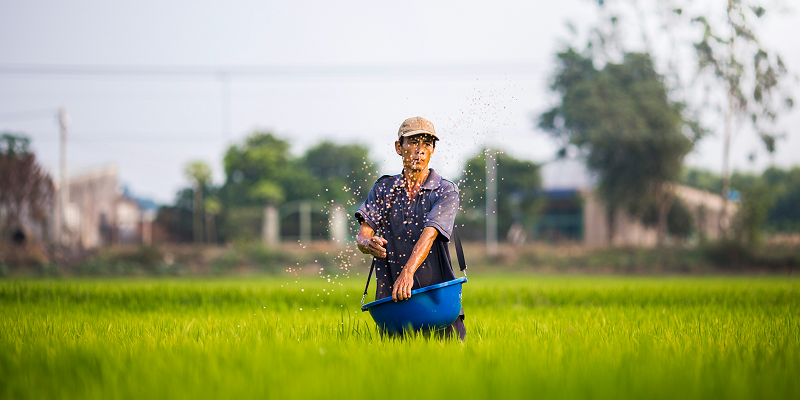Why Pre-Disaster Finance Is the Smartest Investment in a Warming World

Why Pre-Disaster Finance Is the Smartest Investment in a Warming World. Share Facebook Twitter Youtube Whatsapp Linkedin Introduction: The Hidden Cost of Waiting From catastrophic floods in Asia to record-breaking droughts in Africa, the cost of recovering from climate disasters is rising rapidly. According to the World Bank, post-disaster rebuilding can now exceed 5% of GDP in vulnerable countries. With rising material and labor costs, accelerated urbanization, and intensifying climate shocks, traditional relief efforts are struggling to keep pace. Climate Disasters Are Now More Expensive Than Ever Inflation in construction materials and skilled labor has doubled average rebuilding costs over the last decade (UNDRR, 2022). Rapid urban expansion means more assets are exposed to flooding including homes, infrastructure, supply chains. “Once-in-a-century” events now occur every 10–20 years, driving national economic losses into the tens of billions (IPCC AR6, 2023). Why Post-Disaster Relief Falls Short? Relief funds often arrive months after a flood, delayed by slow damage assessments and political bottlenecks. This “protection gap” leaves affected populations without timely cash, stalls recovery, and deepens long-term vulnerabilities. In some cases, only 10–30% of pledged recovery aid is delivered within the critical early phase (World Bank, 2022). Pre-Disaster Finance: A Paradigm Shift Pre-disaster finance mobilizes resources before the storm hits, ensuring funds are immediately available when a predefined trigger is met. Key instruments include: Parametric Insurance: Automatic payouts based on objective metrics (e.g., rainfall thresholds or river levels), bypassing claims adjusters Catastrophe Bonds: Transferring extreme-loss risk to capital markets, with investors bearing losses above set thresholds Forecast-Based Financing: Early action grants activated by weather forecasts, enabling rapid evacuation and livestock protection Contingency Funds: Pre-committed public or donor pools earmarked for emergency response Benefits of Anticipatory Finance Rapid Liquidity: Immediate funds reduce evacuation time and limit damage Predictable Budgets: Fixed-trigger payouts allow governments and businesses to plan with confidence Social Protection: Quick support for smallholder farmers, MSMEs, and informal workers Market Confidence: Embedding climate risk tools in corporate strategies attracts investors and strengthens supply chains A Shift from Response to Preparedness The global discourse is shifting. Frameworks like the Sendai Framework for Disaster Risk Reduction and initiatives led by the UN, World Bank, and regional actors increasingly advocate for anticipatory action and risk-layered financing. The goal: move from reactive recovery to proactive resilience. Incorporating climate-smart financial tools such as parametric insurance is no longer a niche strategy, it’s becoming a standard for sustainable risk management. Act Before It Strikes The economics are clear: the cost of doing nothing is rising, and traditional recovery is no longer viable on its own. Whether it’s a government protecting public infrastructure, a farmer securing a harvest, or a business safeguarding operations—investing in pre-disaster finance is a strategic imperative. When every flood, drought, or cyclone costs more than the last, the smartest response is one that begins before the disaster does.
Myanmar and Thailand Shook. A Wake-Up Call For India?

Myanmar and Thailand Shook. A Wake-Up Call For India? Share Facebook Twitter Youtube Whatsapp Linkedin A 7.7 magnitude earthquake struck Myanmar and parts of Thailand, shaking the region and the world into momentary awareness. In just a few minutes, over 2,000 lives were lost, more than 4,000 people were injured, and entire communities were left in ruins. Bridges collapsed. Roads split open. Hospitals struggled to cope. The scenes were devastating—but sadly, not unfamiliar. We’ve seen it before. We’ve read the headlines, watched the aerial footage, and moved on. But perhaps what makes this quake different is not just its death toll or the destruction it left behind—but its location. Myanmar and Thailand are not distant, disconnected places. They’re part of our shared tectonic geography. And if the earth moved so violently there, it can—and will—move here too. This isn’t fear-mongering. It’s how Geography and Nature works! A Brutal Reminder of Earth’s Unforgiving Mechanics Earthquakes are among the few natural disasters that strike without warning. While cyclones and floods give hours or days to prepare, earthquakes arrive unannounced and unleash devastation in seconds. The Myanmar quake occurred along the Sagaing Fault, a horizontal strike-slip fault that mirrors other well-known fault systems like California’s San Andreas. These types of faults store immense pressure over time and release it suddenly, causing the earth’s surface to shudder and ripple. Such geological events are a feature of plate tectonics, and in that regard, South and Southeast Asia are stitched together by the same dangerous seams. The Indian tectonic plate, colliding with the Eurasian plate, forms the Himalayan belt—one of the most seismically active regions in the world. Every major quake in our extended region is not an isolated incident. It’s part of an interconnected system—a tremor in one corner that echoes into another. But Are We Ready? This is where the narrative must shift—from Myanmar’s tragedy to India’s terrifying vulnerability. India is not on the sidelines of this story. In fact, geologists have long said that a massive earthquake, possibly magnitude 8 or higher, is overdue in the Himalayan region. The danger is not theoretical. It’s inevitable. Roughly 59% of India’s landmass is vulnerable to seismic activity. Some of our most populated and economically critical cities—Delhi, Guwahati, Mumbai—are located in high-risk seismic zones. The Northeast faces the compounded risk of tectonic subduction. Even central India, once considered geologically stable, has had deadly intraplate earthquakes like the Latur quake in 1993. The reality is simple: there is no place in India where complacency is justified. And yet, that is exactly where we stand. Complacency Has Become the Norm Despite decades of warnings and historical evidence, India remains dangerously unprepared for a large-scale seismic event. Our cities have grown faster than our safety standards can catch up. Skyscrapers are built in haste, housing societies sprout across fault lines, and heritage buildings are left to decay—none of them with earthquake resilience in mind. We have building codes. They’re rarely enforced. We have zoning laws. They’re frequently bent or ignored. And when disaster strikes, we fall into a grimly familiar pattern: initial shock, temporary fixes, followed by the slow fade of urgency. The 2001 Bhuj earthquake should have triggered a systemic rethink. It didn’t. The 1993 Latur quake should have taught us about intraplate vulnerability. It didn’t. The 2015 Nepal earthquake, which also affected northern India, showed us the dangers of poor building integrity. Still, not enough changed. This isn’t due to a lack of knowledge. It’s a lack of consistent political and civic will. The Consequences Go Beyond Human Lives Earthquakes don’t just kill people—they crush economies. The Bhuj quake cost Gujarat around $10 billion. The Nepal quake, which barely touched Indian soil, caused $7 billion in damages here. With urban expansion and high-density construction accelerating, the financial risks are only growing. Consider this: hospitals, schools, power grids, transportation hubs—none of these can afford downtime in a crisis. Yet most of them aren’t built to seismic safety standards. An earthquake during working hours could paralyze a city’s emergency response and healthcare system just when it’s needed most. Resilience is not just a moral imperative. It’s an economic one. What Prepared Nations Teach Us There are countries that faced similar dangers—and chose to transform. Japan, Chile, and New Zealand are global models of earthquake preparedness. Their buildings are designed to sway, not fall. Their children grow up learning how to respond when the ground shakes. Their governments invest in early warning systems, structural audits, and regular drills. These are not luxuries of wealthy nations. They are the outcomes of political prioritization and public demand. India, with its vast technical expertise and institutional capacity, can do the same—if it chooses to. And yet, the gap between knowing and doing remains vast. So, What Needs to Change? There is no silver bullet, but there is a clear roadmap. Enforce existing building codes and hold violators accountable. Retrofit critical infrastructure, especially hospitals, schools, and government buildings. Invest in training structural auditors and deploying them at the city and district level. Run public safety drills in schools, offices, and housing societies—regularly. Reclaim open spaces in cities for evacuation zones, resisting overdevelopment. Make earthquake awareness part of civic education, not just disaster management courses. Most of these don’t require new laws or expensive new tech. They require sustained focus and execution. This Is a Shared Responsibility It’s tempting to put this all on the government. But preparedness isn’t top-down. It’s a collective effort. Builders, architects, urban planners, academic institutions, media houses, civil society organizations, and yes—citizens—must all share the burden. We need to demand accountability and compliance. We need to ask better questions before we buy a home. We need to prepare ourselves and our families. Because when the earthquake comes, it’s too late to start learning. Act Before the Shaking Starts The Myanmar earthquake was not just a regional tragedy. It was a mirror held up to all of us—especially those of us in India living in fragile cities built on
Microinsurance Revolution: A Four-Way Partnership Model For A Secure Future

Microinsurance Revolution: A Four-Way Partnership Model For A Secure Future Share Facebook Twitter Youtube Whatsapp Linkedin Across the globe, over 3.6 billion people (World Bank)—many of whom reside in low-income rural regions or urban slums—remain perilously vulnerable to financial collapse from a single disaster. Yet, they lack any form of insurance protection. These individuals, often smallholder farmers or informal workers scraping by on minimal resources, find traditional insurance entirely out of reach due to its prohibitive costs and overwhelming complexity, leaving them exposed to risks that could erase their livelihoods in an instant. Microinsurance, with its promise of affordable coverage tailored to their needs—like premiums as low as one dollar per month—offers a transformative solution, but only if it can overcome the immense challenge of scaling to meet this vast, unmet demand. No organization can achieve this alone, as startups can innovate rapidly yet struggle with limited reach, governments can mobilize resources but often lag in execution, corporations wield financial power but resist change, and NGOs excel at community trust yet falter in technological expertise. The answer lies in a sophisticated four-way partnership model—bringing together startups, governments, corporates, and NGOs in a coordinated effort—which holds the potential to unlock a revolution in microinsurance and safeguard millions from catastrophe. The Stakes: Why Microinsurance Matters Now Today, the urgency for microinsurance grows more pressing than ever. As climate change unleashes unpredictable weather patterns— from prolonged droughts to devastating floods— the lives of smallholder farmers relying on stable seasons for survival, are threatened. Meanwhile, pandemics and economic instability expose the vulnerability of informal workers, who lack any safety net. Traditional insurance, burdened by high premiums averaging $50 annually and complex paperwork inaccessible to those without formal education, fails miserably to serve these populations, leaving a gaping void that microinsurance aims to fill with its low-cost, straightforward products delivered through widely available mobile technology. For instance, a farmer in rural India, facing the loss of an entire rice harvest due to a failed monsoon, cannot afford conventional coverage, but a microinsurance policy costing just $1 monthly—paid via a simple phone transaction—could provide the funds needed to replant and sustain her family. Despite this potential, the International Labour Organization (ILO) estimates that microinsurance currently reaches less than 15% of its target market—approximately 192 million people out of a possible 1.2 billion—because scaling such a system demands far more than isolated efforts; it requires a robust, interconnected ecosystem of players working in unison. The Four Players: Roles in the Revolution The impact of microinsurance doesn’t emerge in isolation—it is the result of a carefully orchestrated effort among multiple players, each bringing unique strengths to the table. While microinsurance holds the potential to protect millions from financial shocks, its success hinges on an ecosystem that fosters innovation, ensures accessibility, and builds trust among those who need it most. At the heart of this revolution are four key stakeholders, working together to make microinsurance scalable and sustainable. Startups act as the innovators, driving new models through advanced technology—whether it’s mobile applications for seamless enrollment, artificial intelligence for precise risk assessment, or blockchain for instant payouts. However, their biggest challenge lies in scaling beyond pilot projects due to limited financial resources and network reach. Governments serve as the enablers, providing crucial support through subsidies, public data (such as weather records), and policies that encourage adoption. Yet, bureaucratic inefficiencies often slow the momentum of their well-intentioned initiatives. Large corporations, especially insurers, function as the financial backbone, offering underwriting capacity, reinsurance to manage risk, and vast distribution networks. However, their cautious approach can sometimes delay the adoption of innovative but untested solutions. Multilateral organizations and NGOs step in as the connectors, leveraging their deep community trust to educate and extend insurance to marginalized populations. While instrumental in outreach and awareness, they often lack the technical infrastructure to implement solutions independently. Only when these four forces align—such as a startup’s weather-based insurance product funded by government support, distributed through a corporate network, and promoted by an NGO—can microinsurance become an accessible reality for those who need it most. But how does this collaboration translate into a functioning system? The next section breaks down the mechanics of how microinsurance works in practice. How It Works: A Real-World Blueprint To illustrate the power of this four-way partnership model in action, consider the collaboration between Weather Risk Management Services (WRMS) Global and India’s Pradhan Mantri Fasal Bima Yojana (PMFBY), which demonstrates how these stakeholders unite to deliver microinsurance at an unprecedented scale with tangible results for farmers facing climate risks. In India, where 70% of farmers depend on rain-fed agriculture and face frequent crop losses due to erratic weather, PMFBY—a government-initiated scheme launched in 2016—aims to provide affordable crop insurance with premiums as low as 2% of the insured value, subsidized heavily by public funds to ensure accessibility for millions. As an AgTech innovator, WRMS Global has played a pivotal role in strengthening PMFBY by developing WINDs (Weather Information and Decision Support)—a cutting-edge web portal that integrates real-time weather data from satellites and ground stations directly into the insurance framework. This system enables automatic claims processing, ensuring that payouts are triggered swiftly when predefined weather thresholds—such as extreme heat or rainfall deficits—are breached.. PMFBY’s corporate insurance partners, responsible for underwriting and claims processing, provide the financial backbone for this initiative, while NGOs and rural cooperatives drive grassroots engagement by enrolling farmers, educating them about the insurance process, and building trust in regions where traditional insurance has historically struggled to gain acceptance.. By 2023, PMFBY had insured over 56 million farmers annually, and with the integration of WRMS’s WINDs portal, payout times were reduced from months to just weeks. In one case, a farmer in Maharashtra affected by drought received $20 within 10 days, allowing him to quickly replant his crop—a real-world demonstration of how an effective four-way partnership can deliver timely, life-changing support at scale. Overcoming Barriers: Making Collaboration Stick While the potential of this four-way partnership shines brightly, achieving seamless collaboration requires overcoming
Impact of Financial Aid Delay on Vulnerable Communities

Impact of Delayed Financial Aid in Post-Disaster Recovery Abstract As natural disasters continue to intensify, traditional funding mechanisms for recovery have proven inadequate. Communities are often left stranded in the critical moments following a major crisis. This White Paper examines the profound impact of delayed disaster financing on economic recovery, social stability, and environmental resilience. It highlights how bureaucratic inefficiencies and slow-moving funding exacerbate poverty, prolong the recovery of GDP, and amplify public health crises, drawing on case studies like Haiti’s extended recovery post-earthquake and Japan’s prompt, coordinated response to the 2011 tsunami. The paper calls for a paradigm shift toward innovative financial tools, such as parametric insurance and catastrophe bonds, which enable rapid, data-driven payouts and encourage proactive investment. It stresses the need for robust governance, national ownership, and policy reforms to ensure that aid is distributed efficiently and equitably. Aligning with global initiatives like the SDGs, this paper offers actionable insights for building resilient communities and ensuring that financial support reaches those in need without delay, creating a future-proof framework for disaster recovery. Read White Paper REACH OUT TO US
